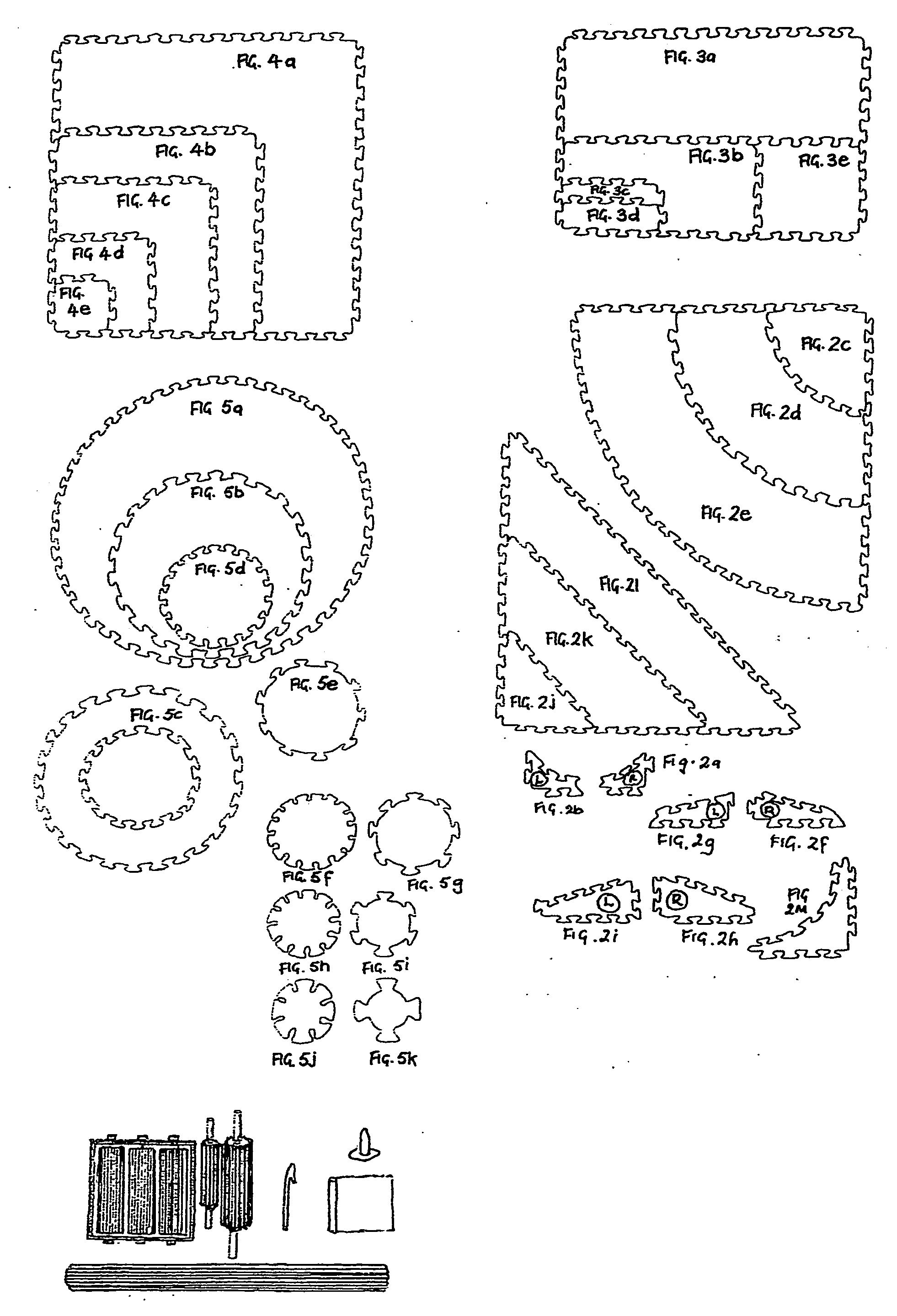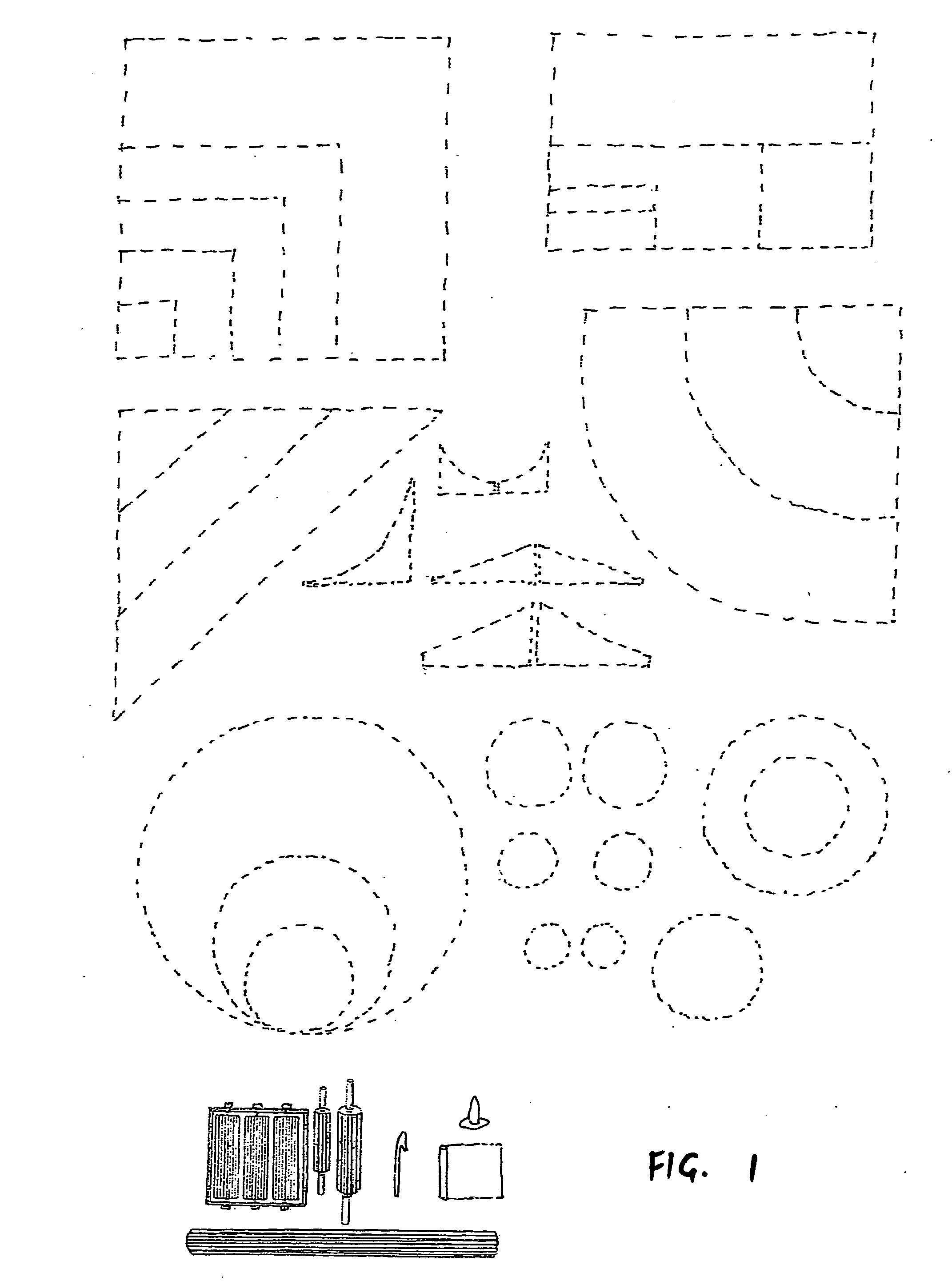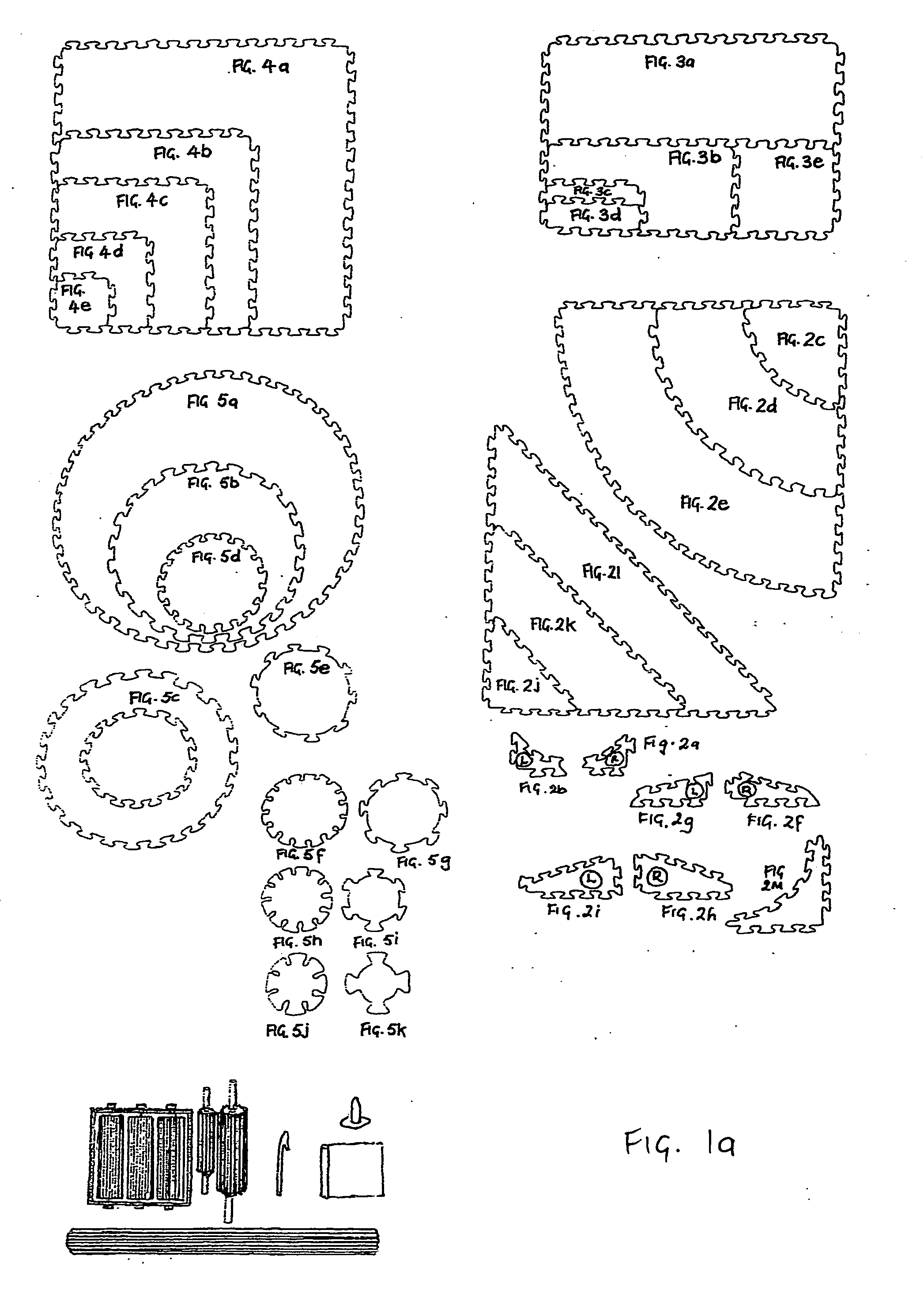Felting loom system and method for producing felted woven fibre art textile shapes
a loom system and woven technology, applied in the field of felting loom system and method for producing felted, woven fibre art textile shapes, can solve the problems of poor and unattractive drape, large outlay for most non-professionals, large amount of labor, etc., and achieve the effect of appealing tactile and stimulating strong consumer desir
- Summary
- Abstract
- Description
- Claims
- Application Information
AI Technical Summary
Benefits of technology
Problems solved by technology
Method used
Image
Examples
Embodiment Construction
[0257]FIG. 1. Shows an aerial top view diagram representation, of the felting loom system's manual handcrafting apparatus kit, according to the first aspect of the invention, wherein, 41 components of the preferred embodiments are disclosed. This diagram representation, illustrates different loom block shape categories, comprising the apparatus kit and multi-size range assortment, in each of the loom block multi-shaped categories and below the shown loom block shape categories, is a diagram representation of the method's shown auxiliary tool components.
[0258]This diagram also represents, the felted woven, fibre art textile shapes that might be produced, by utilizing the corresponding loom block shapes. The loom block shapes may also be configured and interlocked together, so as to create purposefully shaped, loom framework compositions. Suggestions for loom block shape configurations, are further illustrated below, in the FIG. 10 drawings.
[0259]FIG. 1a. Shows an aerial top view diag...
PUM
 Login to View More
Login to View More Abstract
Description
Claims
Application Information
 Login to View More
Login to View More - R&D
- Intellectual Property
- Life Sciences
- Materials
- Tech Scout
- Unparalleled Data Quality
- Higher Quality Content
- 60% Fewer Hallucinations
Browse by: Latest US Patents, China's latest patents, Technical Efficacy Thesaurus, Application Domain, Technology Topic, Popular Technical Reports.
© 2025 PatSnap. All rights reserved.Legal|Privacy policy|Modern Slavery Act Transparency Statement|Sitemap|About US| Contact US: help@patsnap.com



